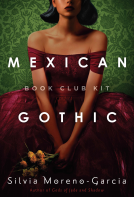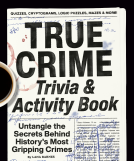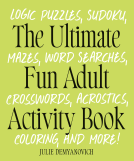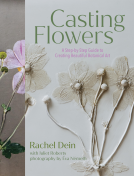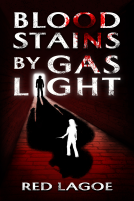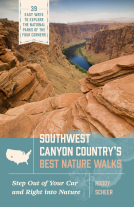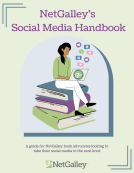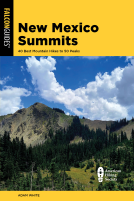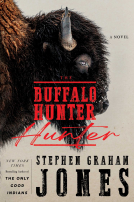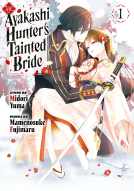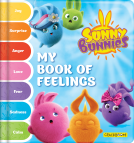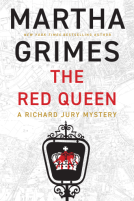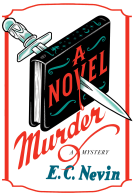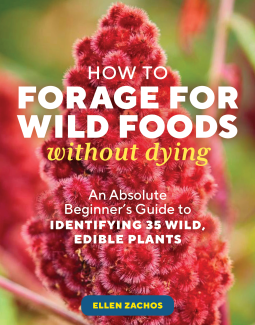
How to Forage for Wild Foods without Dying
An Absolute Beginner's Guide to Identifying 40 Edible Wild Plants
by Ellen Zachos
This title was previously available on NetGalley and is now archived.
Send NetGalley books directly to your Kindle or Kindle app
1
To read on a Kindle or Kindle app, please add kindle@netgalley.com as an approved email address to receive files in your Amazon account. Click here for step-by-step instructions.
2
Also find your Kindle email address within your Amazon account, and enter it here.
Pub Date Oct 10 2023 | Archive Date Oct 10 2023
Storey Publishing | Storey Publishing, LLC
Talking about this book? Use #HowtoForageforWildFoodswithoutDying #NetGalley. More hashtag tips!
Description
This on-the-go guide is perfect for new foragers eager to learn about the edible plants they're most likely to find, no matter what region they're in, and provides photos and easy-to-follow identification and use guidelines for the 40 most common—and most delicious—wild plants.
How to Forage for Wild Foods without Dying is a book for anyone who likes to go on nature walks and would like to learn about the edible plants they’re most likely to come across—no matter what region they’re in. Author Ellen Zachos shares her considerable expertise, acquired over decades of foraging in every part of North America. She offers clear, concise descriptions of edible wild plants, in addition to any potential lookalikes, as well as critical information about proper harvesting, processing, and cooking. Zachos has curated the plant selection to include only the 40 most common, most delicious edible plants, ranging from black walnuts and juniper berries to elderflowers, burdock, fiddlehead ferns, lambsquarter, wild garlic, sunchokes, and many more. With Zachos’s expert advice and easy-to-follow guidelines, readers will be confident in identifying which plants they can safely eat and which ones they should definitely avoid. Easy instructions for preparation and eating for maximum enjoyment are included.Available Editions
| EDITION | Other Format |
| ISBN | 9781635866131 |
| PRICE | $16.99 (USD) |
| PAGES | 256 |
Links
Available on NetGalley
Featured Reviews
I am such a garden girl, and I'm always looking for ways that I can add my native species into my cooking rituals and healing patterns, and this book is coming in great hand for me within my journey. I am so thankful to have received digital access and I look forward to publication day on October 10, 2023.
 Ren H, Reviewer
Ren H, Reviewer
Thank you to NetGalley and Storey Publishing for approving my request to read an arc of this book
If you’re looking for a foraging book then this is the one to get. I’ve read lots and this one has taught me new things and better ways to safely identify. It’s so informative and easy to understand with helpful photos to go along with it.
As someone who enjoys tent camping, and gardening, I found the title especially eye-catching since lately, I've tried to incorporate more native species into both my flower bed and garden. While camping or simply trail walking, I've found it intriguing to discover at first glance, many items which appear to simply be weeds, are in fact edible plants.
Along with the colorful illustrations, easy-to-relate narrative, and especially the illustrative drawings such as helpful foraging tools, the book helped give me a new perspective on the many plants which surround us and yet were edible.
One such example is the milkweed. Currently growing in my flowerbed for the butterflies, I hadn't realized until reading the book, it can double as also an edible source, though growing them to provide the butterflies and the caterpillars, a native plant to attract them, makes wanting to eat the plants. However, the author's helpful reminder dogbane can be confused with milkweed, is a helpful reminder of how disconnected in many ways, humans have become from nature. Whether one is a gardener or a hiker, "How to Forage for Wild Foods without Dying" is both an entertaining, but also a helpful resource.
Thank you to NetGalley and Storey Publishing for approving my request to read an arc of this book
Y'all, this book is awesome for beginners!! It has so much information that is put together in layman's terms that will make learning all about foraging easier than you'd think.
The author, in her introduction, notes that she chose some of the most common foods to harvest that have very few poisonous copy-cats. Pictures are side by side and she details the differences.
There is a section that helps you learn leaf parts so when you want to describe what you found, you have the jargon to ask the professional and answer their questions knowing what they mean with their questions.
Zachos also breaks down each plant and what parts are edible and how to use them in recipes, which she shares a few examples at the back of the book.
Overall, this a fabulous must have book for anyone interested in harvesting out and about on your hikes, or your backyard!
Thank you #NetGalley for #HowtoForageforWildFoodswithoutDying by #EllenZachos
How to Forage for Wild Foods without Dying by Ellen Zachos is so comprehensive and well done from format, the photos on the immense research that this book can take someone very apprehensive and strap them up with the knowledge to go forth and forage.
I love stuff like this and the native american in me wants to do this but I have so many allergies from my Swedish paternal side that I can have derma rashes from some plants but this book can take me from the geebies to the can dos.
It's feels like a bible for foraging for wild foods the book is so well done. All equipment listed and photographed with recipes for your hopeful bounty harvest. There is a great index and you couldn't want for better plant ID and photos on wild foraging.
I would like to thank NetGalley, the great publisher Story Publishing for again realizing how much a gap and need for the books they publish!!! And the opportunity to read and review How to Forage for Wild Foods without Dying by Ellen Zachos. A complete gem of a book! An absolute five stars.
 Stephanie M, Librarian
Stephanie M, Librarian
This book is profoundly simple to use and uses very colorful images to meet the descriptions of each urban-foraged plant. From dandelion to curly dock, to daisy and wild garlic, the author surprises with in-depth descriptions that would make urban foraging easy for beginners. I must read for those who seek to harvest wild edibles. I definitely recommend it.
 Reviewer 981829
Reviewer 981829
tl;dr
A fairly straightforward and practical guide for beginners. The final chapter is a standout addition for anyone looking for how to preserve their foraged goods.
Thoughts
As always, the best way to learn how to forage is with a local guide, and the worst way is with an app (seriously, apps are SO bad at identifying plants - please do not use them). But I'm very pleased to see so many books available for beginners that make foraging accessible for people who might not have a local guide immediately available. This book covers a lot of easy entry points for beginners, including dandelions, stinging nettle, and ramps. It also covers some of the biggest beginner mistakes, including the very poisonous water hemlock. While the focus is on North American plants, a lot of these plants are available all over the globe, so there's a decent appeal here no matter where you live. My favorite part is the final chapter, which includes recipe/process guides on what to do with your foraged goodies. Notes on how to preserve items, infuse flavors, make wine, and other great food options are a huge bonus for books that typically don't explain how a lot of these things work. As is my usual hang-up with guide books, I could always use more photos - especially for plants with distinctly different stages - but this is a great starting point for anyone looking to get into foraging.
 Librarian 1168736
Librarian 1168736
I am an avid forager, but I've recently begun "eating wild" with my granddaughters, all of whom are early-elementary aged and younger. So, I've been looking for a beginner's guide to carry with us on our jaunts.
Good news: I FOUND IT!
Here's what I love most about Zachos's How to Forage for Wild Foods without Dying:
1. The Organization: I love that the chapters are organized by where we might find the plants—everywhere, sunny or shady spots, wet areas. This makes it easy to see what we might look for depending on where we're exploring that day. For example, when the girls visit my house, they already know that the property has large, untended shady spaces and a swampy area. This makes it easy for us to use the guide to plan our search. The fact sheets at the end of each entry are also incredibly helpful.
2. The Photos: There are plenty of photos to help new foragers identify both the featured foragables and their most common look-alikes. We've already tested the usefulness by taking the tablet outside to identify mallow and Queen Anne's Lace (the girls giggled in delight at the "the queen has hairy legs" mnemonic). Between the photos and the written descriptions, even the four-year-old was able to determine when we'd found what we were looking for.
3. The Sass & the Suggestions: Throughout the book, Zachos is delightfully opinionated, letting readers know which plant parts are edible but, in her estimation, not worth the time or trouble. As someone who's foraged for years, I have to admit that our opinions generally align. I also appreciate how she repeatedly insists that we eat nothing that we're not 100% certain about (and, no, 99% certainty is not good enough!), while at the same time encouraging experimentation when it comes to eating and enjoying our wild harvest. And her chapter on preserving, complete with several very adaptable basic recipes, is just enough to get a beginner started confidently.
Despite the number of foraging books I already own (yes, I have a dedicated shelf for them), I will be ordering one more (hint: this one). I have no doubt that How to Forage for Wild Foods without Dying will more than earn its place—and not just on the shelf. It'll be the handbook that stays in the day pack for impromptu wild food adventures.
A book "how to forage for wild foods without dying" has been a brilliant refresher for myself. I love foraging and even with lots of knowledge I am still in doubt and end up leaving lots of valuable plants behind, this refreshed my memory and gave new interesting insights on locations and how this might affect the foraging choice. Thank you NetGalley and the publisher for the ARC. I thoroughly enjoyed this book.
 Donna K, Reviewer
Donna K, Reviewer
My family likes to hike and we always say we are going to forage for plants, but we never do. I’m afraid we will get something poisonous. With this handy guide you can identify the 40 most common plants and what part of the plant you can eat. The author also includes if there is a poisonous lookalike. I like how the author shows what they include in their foraging bag.
This book is extremely thorough. It includes information such as tools, best harvest time, how to eat & cook the plants, where to find them, preservation techniques, poisonous look-alikes, & identification checklists. I would much prefer this over an app subscription
I absolutely loved this book! I have about twenty acres on a mountain. My husband and I are constantly trying to figure out what the plants are on our property. We have quite a few berries and other plants that we think are edible, but we aren’t sure. Of course, the apps all give different answers, so they’re no help. This book has beautiful pictures and breaks down how to identify each one in stupid proof terms. It’s been a great addition to my collection. I’ve already found some of these plants on my property! I’m definitely buying a hard copy of it to keep up there!
Huge thanks to Storey Publishing and NetGalley for sending me this ARC for review! All of my reviews are given honestly!
Loved the introduction and the breakdown of the different parts of plants. The Know Before You Eat brief on each plant was a genius move by the author. This makes it great for reference after finishing the book without having to re-read individual sections again in depth. I loved that the author included full color pictures and descriptions of the plants and that for some (like Milkweed) they showed the differences between the plant and a poisonous look a-like. This book is definitely key for anyone who doesn’t want to die while foraging and I definitely plan to keep this book as a staple in my own foraging adventures.
 Reviewer 965833
Reviewer 965833
I love the idea of foraging but have always been afraid to try — worried that I’ll take something dangerous, or harm the plant by taking much. Not any more! “How to Forage for Wild Foods without Dying” uses words and photos to guide foragers to where specific plants might be found, uses checklists to help identify common edible plants, and presents simple instructions for harvesting. It’s perfect for beginners, but I would imagine experts would also learn a great deal. The book also includes a chapter on preserving, which is something to aspire to! This is an excellent resource and one I will take with me on my next hike.
Thanks to NetGalley for the ARC.
This book is a must read for anyone looking to confidently break into foraging. Zachos gives clear steps for identification and simple instructions for how to enjoy the bounty that surrounds us. The chapter at the end on preserving is a wonderful guide to sustaining the foraged harvest throughout the year. With a warm welcome to all foragers and a sharp wit, Zachos truly does want everyone to forage (and not die!)
Thank you to NetGalley and the publishers for the advance copy, all opinions are my own!
This book provides so much information first on foraging methods and tools before breaking down edible plants. Providing an insights into where to find the plant, how to properly identify, how to harvest it, and how to eat and store what's been harvested. There are dozens of illustrations paired with in depth explanations.
 denise w, Reviewer
denise w, Reviewer
#HowtoForageforWildFoodswithoutDying #NetGalley
I loved this book so much I am getting a paper copy! Full of useful information, wonderful pictures and advice, this book has it all and its easy to read and understand!
I recommend a paper copy so you can have color pictures to carry with you and compare.
Thank you to NetGalley for an advance reader copy in exchange for a fair review.
 Reviewer 495598
Reviewer 495598
This is a great first primer for those new to foraging. I appreciated the color, detailed photos of the plants so that people know what they are looking at.
 Kimberly P, Reviewer
Kimberly P, Reviewer
Very cool book for any outdoorsman! I have always wondered what it edible around me and this is a great guide. I loved how detailed it was and emphasized what is poisonous. The images were very nice and the layout was perfect. I only reviewed an ebook, but would be interested if this is printed in a small guidebook for easy transportation while outdoors. I received an ARC through NetGalley in exchange for an honest review.
This guide is truly fabulous! It's bright. It's beautiful. It's displayed in a fashion that not only makes sense, but also is easily readable. The information is thorough without being over saturated. Very to the point with helpful photos and tips that will make your future foraging trips bountiful. Not only does this guide show you how to correctly identify plants, it also teaches you how to break them down for every day use. You will learn the benefits of harvesting plants found in your backyard, while also receiving tips on how to best preserve your land and cultivate the area for future harvests. Forage in a way that benefits you and the land's other inhabitants. I would be lying if I said that I sat here and read EVERY page of this book, but I can tell you I will be waiting highlighter in hand for this to be released. A definite add for anyone looking into backyard foraging.
 Reviewer 1219324
Reviewer 1219324
https://www.instagram.com/p/CvxfQ6fOxjS/
I love the title which made me giggle slightly. The table of contents perfectly organizes everything so that the section one is looking for is easily found. I also appreciate that this book is for beginners, such as myself. The book's aesthetic is beautiful which makes learning about foraging much more appealing. The photos that accompany the passages are great visual aids! Highly recommend for all!
We all know the state of the world isn’t in the best place right now. Knowing how to SAFELY forage wild food is a skill we should all know at least the basics about.
This book not only covers the basics, it also gives you details on forty of the most easily identifiable and found plants across all regions. That is so impressive because we all know regional plants can be pretty distinct so having a significant list of so many plants for all of us is a great tool!
ARC provided by the publisher and NetGalley.
 Leyla J, Reviewer
Leyla J, Reviewer
This is a great book, full of information and fabulous color photos that really help identify the wild food. My grandparents taught me to forage for some food, and I recall the nettle soup and dandelion tea and salad.. So much fun and really good for you as well.
I like the fact that this book actually covers a lot of information, has photos of plants that may be mistaken for eatable wild food. I also like the fact that there are some foods that had side issues and should not be eaten, which is explained in the book. A really handy book to have if one is interested in forage wild food Thanks you NetGalley and the publishers for the DR
 Reviewer 677359
Reviewer 677359
Special thanks to NetGalley and Storey Publishing for providing me with a copy of this book in exchange for an honest review.
This book was really cool, I loved learning more about plant identification. This book is perfect for beginners (like me) and the recipes are an awesome addition. I would highly recommend this book.
 Reviewer 658509
Reviewer 658509
Break companion for people that like walking around trails. My husband loves looking for wild snacks while we walk. This books shows some wild plants that we can eat, how to identify them and some plants look alike. I received a free digital copy of this book from NetGalley in exchange for my honest review
Readers who liked this book also liked:
Silvia Moreno-Garcia
Historical Fiction, Literary Fiction, Sci Fi & Fantasy
Julie Demyanovich
Crafts & Hobbies, Entertainment & Pop Culture
Mamenosuke Fujimaru
Comics, Graphic Novels, Manga, Romance, Sci Fi & Fantasy
